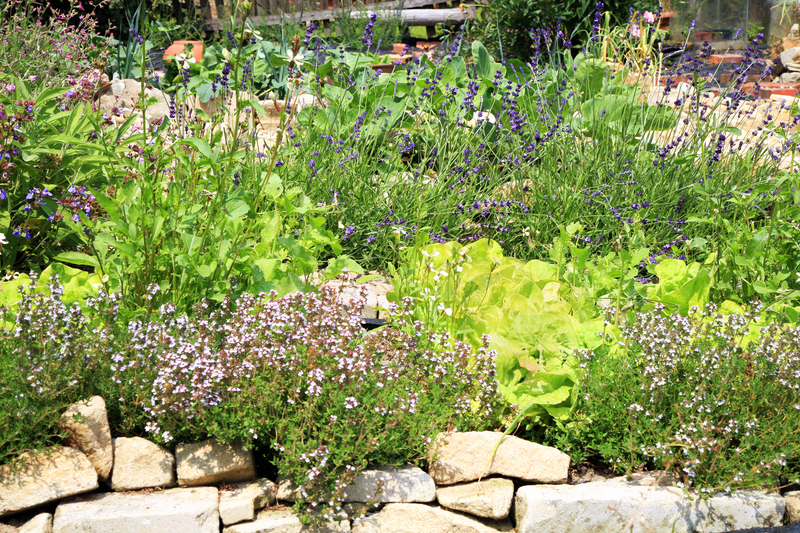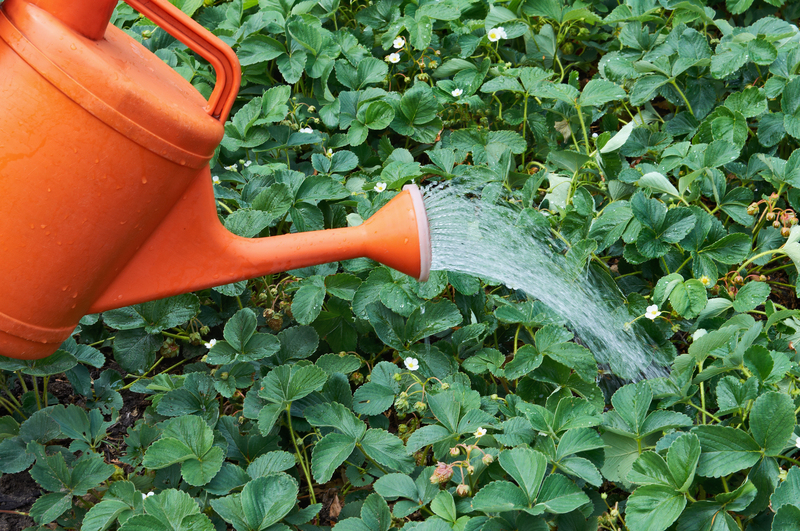Nurturing Nature: Building a Flourishing Herb Garden
Posted on 02/07/2025
Nurturing Nature: Building a Flourishing Herb Garden
A flourishing herb garden is more than a collection of green leaves--it's an invitation to nature, flavor, and well-being. Whether you're a seasoned gardener or a beginner dreaming of homegrown basil or lavender, nurturing nature through an abundant herb garden rewards you with fresh tastes and vibrant scents throughout the seasons. In this comprehensive guide, we'll explore practical steps, time-tested tips, and key considerations for building and maintaining a thriving herb garden both outdoors and indoors.

Why Grow Your Own Herb Garden?
Growing your own herb garden provides an array of benefits that extend beyond your kitchen. Here's why you should consider cultivating your own haven of aromatic herbs:
- Freshness: Handpick herbs at their prime, maximizing flavor and nutrients.
- Cost-Effective: Save money by harvesting rather than buying fresh herbs.
- Sustainability: Reduce packaging waste and the carbon footprint of store-bought herbs.
- Well-being: Enjoy therapeutic benefits--from stress reduction to natural fragrances.
- Biodiversity: Attract pollinators and beneficial insects to your outdoor space.
Understanding the Basics: What is a Herb Garden?
A herb garden is a curated space--outdoors in the ground or in containers, or even indoors next to a bright window--devoted to cultivating culinary, medicinal, or aromatic herbs. These gardens can be as grand or modest as you like, making them accessible for all lifestyles and experience levels.
Planning Your Flourishing Herb Garden
Choosing the Right Location
A crucial first step in nurturing your natural herb garden is selecting the right spot. Most culinary herbs require:
- Sunlight: Aim for at least 6 hours of direct sun daily.
- Good drainage: Herbs do best in well-drained soil. Raised beds, containers, or adding organic matter to ground soil helps prevent waterlogging.
- Accessibility: Place your garden near the kitchen for quick harvesting.
Considerations for Indoor Herb Gardens
If space or climate is a constraint, indoor herb gardens offer a practical and rewarding solution. Key tips include:
- Light: South-facing windows or supplemental grow lights ensure robust growth.
- Pots: Choose pots with drainage holes and saucers to avoid root rot.
- Humidity: Many herbs thrive in moderate humidity - consider misting or grouping plants.
Design Ideas for a Beautiful Herb Garden
Herb gardens can be visually stunning. Try these inspiring garden layouts:
- Knot Gardens: Formal, geometric patterns using different colored or textured herbs.
- Spiral Herb Garden: A raised, spiraling bed that maximizes growing space and microclimates.
- Container Groupings: Mix and match pots for a moveable and flexible arrangement indoors or out.
Selecting Herbs for Your Garden
Essential Culinary Herbs
Start with herbs you enjoy cooking with or using in teas. Some of the most popular and easy-to-grow choices for a lush herb garden include:
- Basil: Thrives in warm weather; perfect for Italian dishes and pesto.
- Rosemary: Hardy and aromatic, excellent with roasted meats and potatoes.
- Mint: Spreads easily, ideal for teas, desserts, and cocktails.
- Parsley: Great for salads, soups, and garnishes.
- Thyme: Versatile; pairs wonderfully with roasted vegetables and meats.
- Sage: Classic in stuffing and rich meat dishes.
- Cilantro/Coriander: A must for salsa and international cuisines.
- Chives: Mild onion flavor; excellent in eggs, dips, and salads.
Medicinal and Aromatic Herbs
Expand your herb garden with varieties that offer therapeutic and fragrant qualities:
- Lavender: Calming scent; use in sachets, oils, and baking.
- Lemon Balm: Uplifting and perfect for herbal tea blends.
- Chamomile: Soothes and helps with relaxation.
- Echinacea: Immune-boosting and beautiful blossoms.
- Borage: Edible flowers and leaves with cucumber flavor.
Mixing Annuals and Perennials
Plan for season-long productivity by blending annual herbs (basil, cilantro, dill) with perennials (rosemary, thyme, mint, sage). This ensures new flavors each year and sturdy garden staples that come back again and again.
Setting Up Your Herb Garden for Success
Soil Preparation
The foundation of a thriving herb garden is quality soil. Here's how to get it right:
- Test the Soil: Ideal pH is between 6.0 and 7.5 for most herbs.
- Add Organic Matter: Compost or well-rotted manure enriches the soil and improves drainage.
- Loosen and Level: Break up clumps and remove debris to encourage root growth.
Planting Techniques
You can start herbs from seeds, seedlings, or cuttings:
- Seeds: Less expensive and offer more variety. Sow according to packet instructions--depth, spacing, and temperature.
- Transplants: Great for instant results. Gently loosen roots and water well after planting.
- Cuttings: Some herbs (e.g., mint, basil) propagate easily in water before potting.
Spacing and Companion Planting
Space plants according to mature size, allowing airflow. Consider grouping herbs by water or light needs. Some herbs, like basil and parsley, can deter pests from neighboring vegetables--a practice known as companion planting.
Nurturing Your Herb Garden
Watering Wisely
Overwatering is a common pitfall. Most herbs prefer to dry slightly between waterings. Best practices include:
- Check Soil Moisture: Insert a finger 1-2 inches deep; water only if soil feels dry.
- Morning Watering: Reduces evaporation and disease risk.
- Mulching: A layer of straw or bark helps conserve moisture, especially outdoors.
Feeding and Fertilizing
Unlike some vegetables, herbs don't need heavy feeding. Organic compost or a balanced slow-release fertilizer once or twice a season is usually sufficient. Avoid high-nitrogen fertilizers, which can dilute flavor.
Pruning and Harvesting for Productivity
Frequent harvesting encourages new growth and a bushier, healthier plant. Pinch back herb tips regularly, and always remove flower stalks unless you want seeds. Annuals like basil, dill, and cilantro benefit hugely from regular cutting.
Pest and Disease Management
Prevent issues by maintaining healthy plants. Most herbs are resistant, but watch for aphids, whiteflies, or fungal diseases. Handpick pests, use insecticidal soap, and avoid overhead watering. Companion flowers like marigolds can help repel harmful insects naturally.
Extending and Enjoying Your Herb Harvest
Year-Round Gardening
In climates with cold winters, bring tender herbs indoors or propagate cuttings on your windowsill. Many herbs can be grown successfully inside with sufficient light--basil, parsley, chives, and mint are especially adaptable.
Drying, Freezing, and Preserving Herbs
To make the most of your flourishing herb garden and minimize waste:
- Dry Herbs: Hang small bunches upside-down in a dry, shady spot.
- Freeze Fresh: Chop herbs and freeze in oil or water in ice cube trays.
- Craft Infusions: Steep herbs in vinegar, honey, or oils for lasting flavors.
Creative Uses for Homegrown Herbs
Your herb garden's bounty goes far beyond the kitchen:
- Natural remedies: Brew teas for relaxation or digestion.
- Beauty: Use herbs in homemade soaps, scrubs, and bath sachets.
- Gifts: Share bundles of dried herbs or custom blends with friends.
- Decor: Fresh bouquets or dried wreaths make beautiful, aromatic displays.
Troubleshooting Common Herb Garden Challenges
Leaf Discoloration and Growth Issues
Yellowing, stunted growth, or shriveled leaves often signal water stress or poor nutrition. Review your watering practices, check for pests, and refresh soil or fertilize as needed.
Herb Bolting (Premature Flowering)
Some herbs, especially cilantro and basil, may bolt and flower early in heat. Slow bolting by mulching roots and harvesting frequently. Choose bolt-resistant varieties for summer gardening.
Container-Bound Roots
If herbs slow down or wilt despite proper care, check for root crowding. Repot or divide overgrown plants every year or two for best results.

Herb Gardens for Biodiversity and Sustainability
A vibrant herb garden doesn't just feed your family--it supports the environment. Many herbs, such as thyme, oregano, and mint, flower profusely, attracting bees, butterflies, and other vital pollinators. By choosing organic practices, avoiding chemical pesticides, and growing diverse species, you create a healthier, more resilient garden ecosystem.
- Pollinator Habitat: Let some herbs flower for bees and beneficial insects.
- Soil Health: Perennial roots prevent erosion and improve soil over time.
- Water Wise: Mediterranean herbs thrive in dry, hot summers--ideal for xeriscaping.
Conclusion: Flourish with a Homegrown Herb Garden
The journey of nurturing nature with a flourishing herb garden is endlessly rewarding. You'll delight in the colors, scents, and tastes of each new season. Remember: start small, grow what you love and use most, and let your garden evolve. Each snip of fresh herbs connects you to the earth, enhances your cooking, and turns every day into a celebration of nature's abundance.
Ready to begin? Gather your seeds, pick a sunny spot, and embark on the wonderful adventure of building your own flourishing herb garden today!



